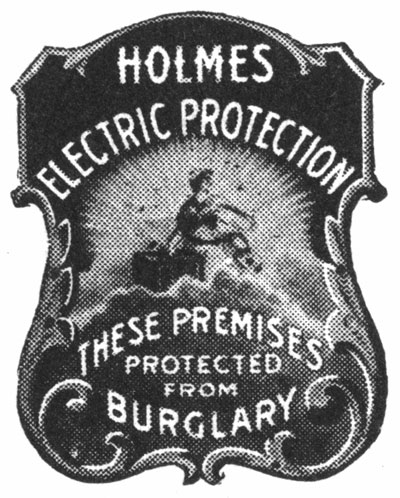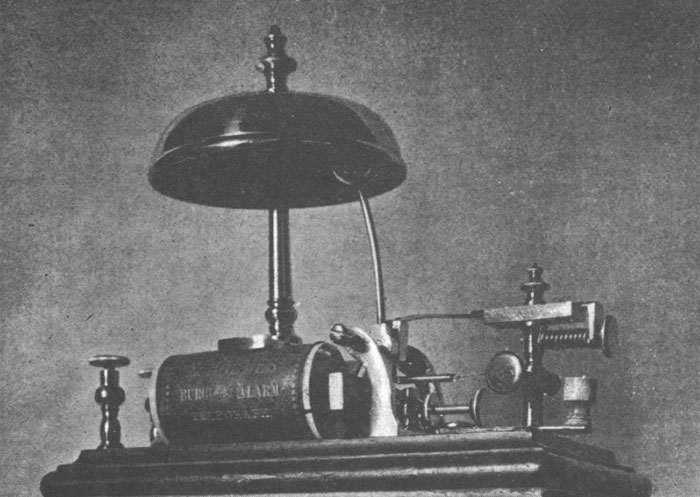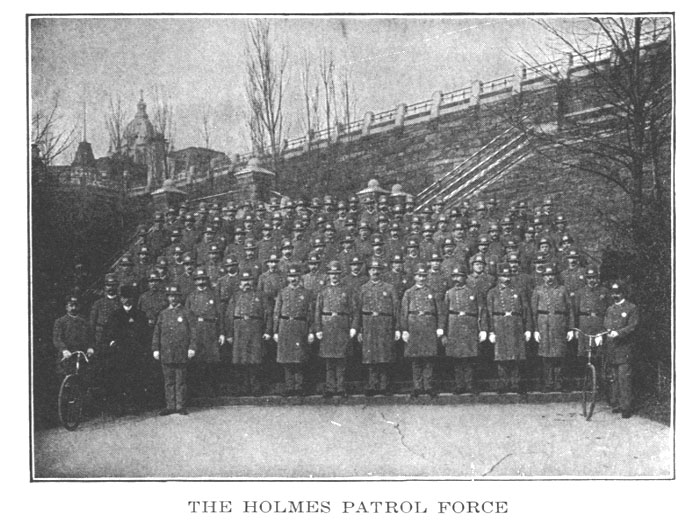|
The Holmes Electric Protective Company |
 |
|
A brief history: The first patent for an electric burglar alarm was issued in 1853 (no. 9,802) to Augustus Pope of Somerville, MA. A shopkeeper and entrepreneur by the name of Edwin Holmes purchased the patent in 1857 and set up a company to install and operate electric burglar alarm systems in Boston. He engaged the services of Charles Williams, a telegraph equipment maker. A young machinist by the name of Thomas Watson was assigned to the Holmes account. This was the same Thomas Watson who was to become famous two decades later as the assistant to Alexander Graham Bell. The Williams company was to became the first manufacturer of equipment for the fledgling Bell system. One of his products from 1877 can be seen here. |
 |
|
Shown above is an early Holmes alarm bell, circa 1880, made by Charles Williams' company. In 1859, Holmes moved to New York, where he felt there were more wealthy clients who would be interested in his service. The Holmes Burglar Alarm Company grew, and expanded into other cities. He dabbled in other ventures, including an electric igniter for gas lamps, and call systems for hotels. His son, Edwin T. Holmes, had started working after school for the company, and would eventually become its president upon his father's death in 1901. By 1877, the alarm business had grown to the extent that the Williams shop could not accommodate the volume of business from Holmes, so shops were set up to manufacture the cabinets and necessary electric apparatus. In 1877, while visiting Williams' shop in Boston, E. T. Holmes, encountered Watson working on Bell's telephone. In the following year, the Holmes' alarm central office in Boston became the first telephone exchange, with the overhead alarm system wires being used for telephonic use during business hours. The first switchboard was a simple affair, serving only a handful of subscribers. The New York office served the same function. Thus, the Holmes family, father and son, were briefly in the telephone business, but sold out their stock holdings for a substantial cash payment, and decided to concentrate on the alarm business. In 1882, the company was reorganized as the Holmes Electric Protective Company. Edwin Holmes was the president, E. T. Holmes was the treasurer, and James Tomney, was the secretary. |
 |
|
The business flourished, and they even operated a private police force to respond to alarms. The density of overhead wires had reached a crisis point, New York decreed that all wires were to be run underground. Holmes reached an agreement with the telephone company to share wires, so, the same wires could be used for telephones during business hours, and for alarms when the businesses were closed. Similar arrangements were made for residential installations. The Holmes company was eventually absorbed by the Grinnell Corporation in 1950. It is now SimplexGrinnell, a division of Tyco Fire & Security, itself a division of Tyco International, Ltd. A sister division, ADT, is the descendant of the American District Telegraph Company, the maker of the burglar alarm device elsewhere on this site. For anyone interested in the history of the Holmes' business, the 1917 privately published book A Wonderful Fifty Years by E. T. Holmes (ghostwritten by Sarah Ware Bassett) can be accessed on-line in raw (scanned) format. Eventually, this will become a downloadable e-book as part of Project Gutenberg, but I can't predict when (or how long this link will be valid). Return to the Holmes Burglar alarm page.
|